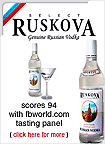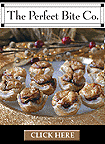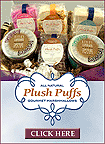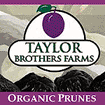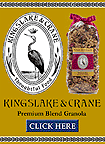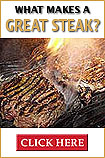Absinthe Without Leave
Return of the Green Fairy
Paris,
1860, 5:00 pm, l'heure verte, (the green hour). Thirty thousand
cafes come to life as waiters trickle ice-water into glasses of
emerald-green absinthe, causing the crystaline liquid to "louche"
milky-white, and exude intoxicating aromas.
Baudelaire
sips while trading bons mots with Oscar Wilde. Lautrec cuts his
with cognac, his signature Tremblement de Terre, or Earthquake.
Van Gogh adds turpentine, Picasso prefers cubes (of sugar and
ice) and Poe dilutes his with tears.
And
now, for the first time since 1912, you, too, can legally partake
in Absinthe, thanks to the European Union pointing out a loophole
in the US ban. Absinthe is a 150-proof liquor based on anise,
fenne and wormwood. These and other herbs give the fabled Fée
Verte (Green Fairy) her grassy color. When the chlorophyll dies,
Absinthe turns, like fallen leaves, to a dark amber hue that's
highly prized in Absinthe circles..
Time
out! Cut the poetry and back up a moment. You mentioned wormwood.
Isn't that why Absinthe was banned? Doesn't that stuff make you
hallucinate and write depressive poetry and chase your mother
around the kitchen with a boning knife?
Actually,
no. The ban was courtesy of the good folks who brought you Prohibition.
They wanted blood, and Absinthe was a convenient fall guy.
Although
wormwood and its psychoactive ketone thujone are toxic in large
amounts, Absinthe contains very little. Less, for instance, than
that other drink whose name is German for wormwood: vermouth.
Once
the province of the wealthy, by the late 1800s Absinthe is cheap
and plentiful. Meanwhile, a worldwide temperance movement is brewing.
Big problem for France, where wine is considered both food and
medicine for grownups and kiddies alike. Wine producers are a
powerful lobby and not about to go down gently. Especially since
they're still smarting from a root louse invasion that all but
destroyed their industry.
The
ensuing shortage has caused workers, used to quaffing wine like
water, to substitute Absinthe. Except it's five times stronger
than wine.
The
resulting wave of drunkenness mirrors the gin-soaked ghettos of
England's industrial towns. To make things worse, Absinthe is
the hip choice of artsy-fartsy bohemians, a suspicious crowd if
ever there was one. So the idea is hatched by an unlikely coalition
of wineries and temperance crusaders: instead of banning alcohol,
let's just ban Absinthe.
Driving
the movement is one Dr.Valentin Magnan, whose clinical studies
indicate Absinthe causes hysteria, epilepsy and projectile excretion
(no, don't try to picture it).. He also notes a general decay
in habitual users, a condition passed on to their offspring. He
coins a syndrome: Absinthisme. Someone might have pointed out
that his studies were all on guinea pigs dosed with enormous amounts
of pure wormwood.
Or
that the hereditary, decaying condition looked an awful lot like
fetal alcohol syndrome and plain old drunkenness. Or that other
effects, like vomiting and vertigo came from illegal adulterants
in cheaper bottlings. But something else happened that made the
scourge all too obvious. In 1905, Swiss farmer Jean Lanfray brutally
murdered his pregnant wife and two children, after having consumed
one coffee laced with brandy, two crème de menthes, six
glasses of cognac, five liters of wine and two glasses of absinthe!
And
that was it. Alas for modern adventurers, rumors of Absinthe-caused
hallucinations, euphoria and other whackery seem unfounded. At
most, it might cause unusually clear-headed drunkenness and vivid
dreams. Although it has been definitely proven to make the heart
grow fonder. (Glad we got that out of the way.)
Probably
the allure that keeps Absinthe in the drug-myth hall of fame is
one shared by all self-respecting psychoactives: the ritual. Being
a somewhat bitter concentrate, Absinthe requires the addition
of water and sugar. But you can't just dump them in. The beauty
is in how the oils precipitate, one at a time, releasing layer
after layer of herbal aroma, and producing the milky swirl known
as "louche."
The
correct thing is to place two sugar cubes on a specially made
slotted spoon. Then hold a pitcher of ice-cold water high and
let it drip down ever so slowly onto the melting sugar cube. Go
too fast, and you'll release the oils all at once and ruin the
effect.
If
you've seen the movie Moulin Rouge, whose frenetic cutting probably
produced far more seizures than Absinthe ever did, you might think
you're meant to light the sugar cube on fire. Don't. The flammable
liquid is likely to erupt in an eyebrow-searing inferno. Far from
a tradition, this travesty was invented in the '90s by makers
of cheap Czech Republic Absinth(sic), to make their ersatz product
fashionable and a little less revolting. Note the missing e and
give it a wide berth.
The
holy grail for Absinthe enthusiasts is the 100-year-old pre-ban
bottle, which you can still obtain for a hefty sum. Good modern
Absinthe is not cheap, but a little goes a long way. The best,
reputable producers can be found at these sites: www.feeverte.net,
www.wormwoodsociety.org,
www.oxygenee.com
and www.absintheonline.com.
Once
you've got a glass or two in you, you might want to practice your
high-kicks. Now that Absinthe is back, it's only a matter of time
for the Can-Can.
|




